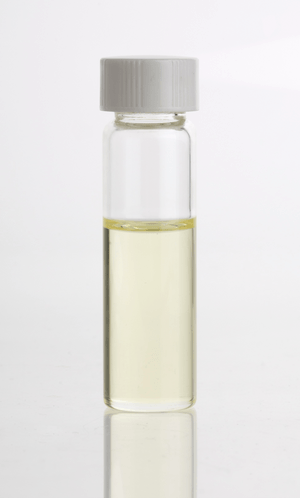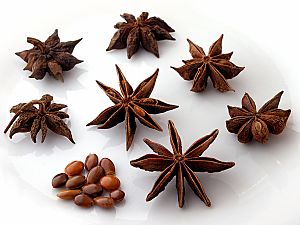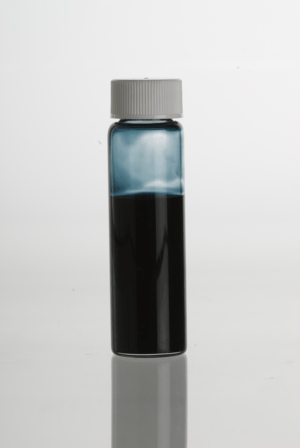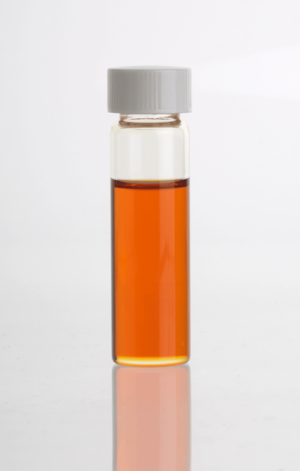List of essential oils facts for kids


Essential oils are special liquids found in plants. They are called "essential" because they carry the plant's unique scent and flavor. Think of them as the plant's natural perfume! These liquids are not like cooking oils; they don't mix well with water. People use essential oils for many things, like making food taste better or creating nice smells in perfumes.
Contents
What Are Essential Oils?
Essential oils are made of tiny parts called aroma compounds. These compounds are what give plants their smell. When you smell a rose or a lemon, you are smelling these compounds. Essential oils are "volatile," which means they can easily turn into a gas and float in the air, allowing us to smell them.
How Are Essential Oils Made?
Most essential oils are made by taking them out of plants using special methods. Here are some common ways:
- Distillation: This is like steaming. Plants are heated with water, and the steam carries the essential oil. When the steam cools, the oil separates from the water.
- Cold Pressing: For citrus fruits like oranges or lemons, the oil is squeezed out of the peel without heat.
- Solvent Extraction: Sometimes, a special liquid (a solvent) is used to pull the oil out of the plant.
Essential oils are different from other oils, like cooking oils or perfumes that have been mixed with other things. Essential oils are usually very pure and can have hundreds of different natural compounds in them.
Different Kinds of Essential Oils
There are many different essential oils, each with its own special scent and uses. Here are some examples:
- Agar oil: This oil comes from agarwood trees and is highly valued for its beautiful smell.
- Ajwain oil: Made from the leaves of the ajwain plant, this oil contains a lot of thymol.
- Angelica root oil: This oil comes from the Angelica archangelica plant.
- Anise oil: From the anise plant, this oil has a strong smell like licorice.
- Asafoetida oil: Used to add flavor to food.
- Balsam of Peru: This oil comes from the Myroxylon tree and is used in food, drinks, and perfumes.
- Basil oil: Used in perfumes and for a type of natural healing called aromatherapy.
- Bay leaf oil: Used in perfumes and aromatherapy.
- Bergamot oil: This oil is used in aromatherapy and perfumes.
- Birch oil: Used in aromatherapy.
- Black pepper oil: Made from the berries of the black pepper plant.
- Blue tansy: Named for the blue color of its oil.
- Buchu oil: This oil used to be used in medicine but is now considered unsafe.
- Calamondin oil: Also called calamansi essential oil, it comes from a citrus tree in the Philippines.
- Calamus oil: Used in perfumes and was once used in food.
- Camphor oil: Found in cosmetics and cleaning products.
- Cannabis flower essential oil: Used to flavor foods like candy and drinks, and in perfumes and soaps.
- Caraway seed oil: Used to flavor foods and in toothpastes.
- Cardamom seed oil: Used in aromatherapy and as a scent in soaps and perfumes.
- Carrot seed oil: Used in aromatherapy.
- Cedar oil: Also called cedarwood oil, it's mainly used in perfumes.
- Chamomile oil: There are two main types, Roman and German. German chamomile has a chemical called azulene.
- Cinnamon oil: Used for flavoring.
- Cistus ladanifer: The leaves and flowers are used in perfumes.
- Citron oil: Used in Ayurveda (an ancient Indian medicine system) and perfumes.
- Citronella oil: From a plant like lemon grass, it's used to keep insects away.
- Clary Sage oil: Used in perfumes and to flavor some alcoholic drinks.
- Clove oil: Used in perfumes and for medicine.
- Coconut oil: Used for skin, hair, and in food.
- Coffee oil: Used to flavor food.
- Coriander oil: Comes from the coriander plant.
- Costmary oil: Also called bible leaf oil, it was used in medicine but contains a toxin.
- Costus root oil: From the costus plant.
- Cranberry seed oil: Used in cosmetics because it's rich in healthy fats.
- Cubeb oil: Used to flavor foods.
- Cumin seed oil: Used as a flavor, especially in meat dishes.
- Curry leaf oil: Used to flavor food.
- Cypress oil: Used in cosmetics.
- Cypriol oil: From the cypriol plant.
- Davana oil: From the Artemisia pallens plant, used in perfumes.
- Dill oil: Very similar to caraway seed oil.
- Elecampane oil: From the elecampane plant.
- Elemi oil: Used in perfumes and comes from trees in the Philippines.
- Eucalyptus oil: Used in the past to kill germs.
- Fennel seed oil: From the fennel plant.
- Fenugreek oil: Used in cosmetics since ancient times.
- Fir oil: From fir trees.
- Frankincense oil: Used in aromatherapy and perfumes.
- Galangal oil: Used to flavor food.
- Galbanum oil: Used in perfumes.
- Garlic oil: Made from garlic.
- Geranium oil: Also called geranol, used in herbal medicine, aromatherapy, and perfumes.
- Ginger oil: Used in medicine in many cultures, especially for nausea.
- Goldenrod oil: Used in herbal medicine for problems with the urinary system.
- Grapefruit oil: Squeezed from the peel of the fruit, used in aromatherapy.
- Henna oil: Used in body art. Some pre-mixed henna pastes can be dangerous.
- Helichrysum oil: From the helichrysum plant.
- Hickory nut oil: From hickory nuts.
- Horseradish oil: From the horseradish plant.
- Hyssop: From the hyssop plant.
- Jasmine oil: Known for its lovely flower smell.
- Juniper berry oil: Used as a flavor.
- Lavender oil: Mostly used for its pleasant smell.
- Ledum: From the Ledum plant.
- Lemon oil: Smells like lemons. It's usually cold pressed and used in cosmetics.
- Lemongrass: A very fragrant grass from India, useful for keeping insects away.
- Lime: From the lime fruit.
- Litsea cubeba oil: Has a lemon-like scent, used in perfumes and aromatherapy.
- Linalool: A natural alcohol found in many flowers and spice plants.
- Mandarin: From the mandarin orange.
- Marjoram: From the marjoram herb.
- Melissa oil (Lemon balm): A sweet-smelling oil.
- Mentha arvensis oil: A mint oil used to flavor toothpastes and mouthwashes.
- Moringa oil: Can be used directly on skin and hair, and in soaps and cosmetics.
- Mountain Savory: From the winter savory plant.
- Mugwort oil: Used in ancient times for medicine. It is now known to be harmful.
- Mustard oil: Contains strong compounds that give mustard its spicy kick.
- Myrrh oil: Has a warm, slightly earthy smell.
- Myrtle: From the myrtle plant.
- Neem oil: From the neem tree.
- Neroli: Made from the flowers of the bitter orange tree.
- Nutmeg oil: From nutmeg.
- Orange oil: Like lemon oil, it's cold pressed. Used as a scent, in cleaning products, and to flavor foods.
- Oregano oil: Contains chemicals like thymol and carvacrol.
- Orris oil: Extracted from iris roots, used as a flavor, in perfume, and in medicine.
- Palo Santo: From the Bursera graveolens tree.
- Parsley oil: Used in soaps, detergents, colognes, and perfumes.
- Patchouli oil: A very common ingredient in perfumes.
- Perilla essential oil: Extracted from perilla leaves.
- Pennyroyal oil: This oil is very dangerous and can cause serious harm even in small amounts.
- Peppermint oil: From the peppermint plant.
- Petitgrain: From the bitter orange tree, but from the leaves and twigs.
- Pine oil: Used as a cleaner and in aromatherapy.
- Ravensara: From the ravensara tree.
- Red Cedar: From the Juniperus virginiana tree.
- Roman Chamomile: A type of chamomile.
- Rose oil: Made from rose petals, mostly used for its beautiful scent.
- Rosehip oil: Made from the seeds of rosehip plants.
- Rosemary oil: Made from the flowers of the rosemary plant.
- Rosewood oil: Mostly used for skin care.
- Sage oil: From the sage plant.

- Sandalwood oil: Used mainly for its pleasant, woody smell in perfumes.
- Sassafras oil: From sassafras root bark. It used to be in root beer but is now regulated because it contains a chemical called safrole.
- Savory oil: From the savory herb, used in aromatherapy, cosmetics, and soap.
- Schisandra oil: From the schisandra plant.
- Spearmint oil: Often used to flavor mouthwash and chewing gum.
- Spikenard: From the spikenard plant.
- Spruce oil: From spruce trees.
- Star anise oil: A very fragrant oil used in cooking, perfumes, and soaps. A lot of it is used to make a medicine called Tamiflu, which helps with the flu.
- Tangerine: From the tangerine fruit.
- Tarragon oil: Made from the tarragon plant.
- Tea tree oil: Extracted from the Melaleuca alternifolia tree.
- Thyme oil: From the thyme herb.
- Tsuga: From the hemlock tree family.
- Turmeric: Used to flavor food.
- Valerian: From the valerian plant.
- Warionia: Used in perfumes.
- Vetiver oil: A thick oil from India, used in perfumes to make scents last longer, and in aromatherapy.
- Western red cedar: From the Thuja plicata tree.
- Wintergreen: From the wintergreen plant.
- Yarrow oil: From the yarrow plant.
- Ylang-ylang: From the Cananga odorata flower.
See also
 In Spanish: Anexo:Aceites esenciales para niños
In Spanish: Anexo:Aceites esenciales para niños



